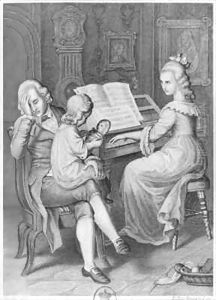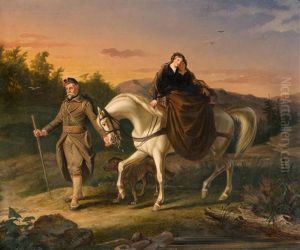Hans Bendel Paintings
Hans Bendel was a Swiss artist born on September 20, 1814, in Zurich, Switzerland. Bendel is remembered particularly for his work as an illustrator and printmaker, though his career was somewhat overshadowed by his contemporaries and cut short by his early death.
Bendel received his initial training in art at the Zurich Art School, where he was recognized for his talent at a young age. He then moved on to further his studies in Germany and later in Paris, which was then considered the heart of the European art world. During his time in Paris, he was influenced by the works of French Romantic artists such as Eugène Delacroix, whose dynamic compositions and expressive use of color left a lasting impression on Bendel's own style.
Returning to Zurich, he worked as a teacher and continued to develop his art, creating illustrations for books and magazines. His illustrations often depicted scenes from Swiss history and mythology, and he was known for incorporating a sense of nationalism and pride in his work. He was also skilled in portraiture and created a number of significant works in this genre.
Bendel was a part of the Nazarene movement, a group of early 19th-century Romantic painters who sought to revive the spirituality and simplicity of medieval art. The Nazarenes were active primarily in Rome, but Bendel was one of the few artists associated with the movement who remained in the German-speaking world. His work was characterized by its linearity and attention to detail, reminiscent of the works of the old masters that the Nazarenes so admired.
Despite his talent, Bendel struggled with health issues throughout his life, which hampered his productivity. His career was marked by bouts of illness, which eventually led to his early death at the age of 38 on February 27, 1853, in Zurich. Although his oeuvre is not extensive, his work is appreciated for its contribution to Swiss art and for its embodiment of the Romantic spirit of his time. Today, Bendel's work can be found in various Swiss museums, and he is recognized as an important figure in the history of Swiss art.

